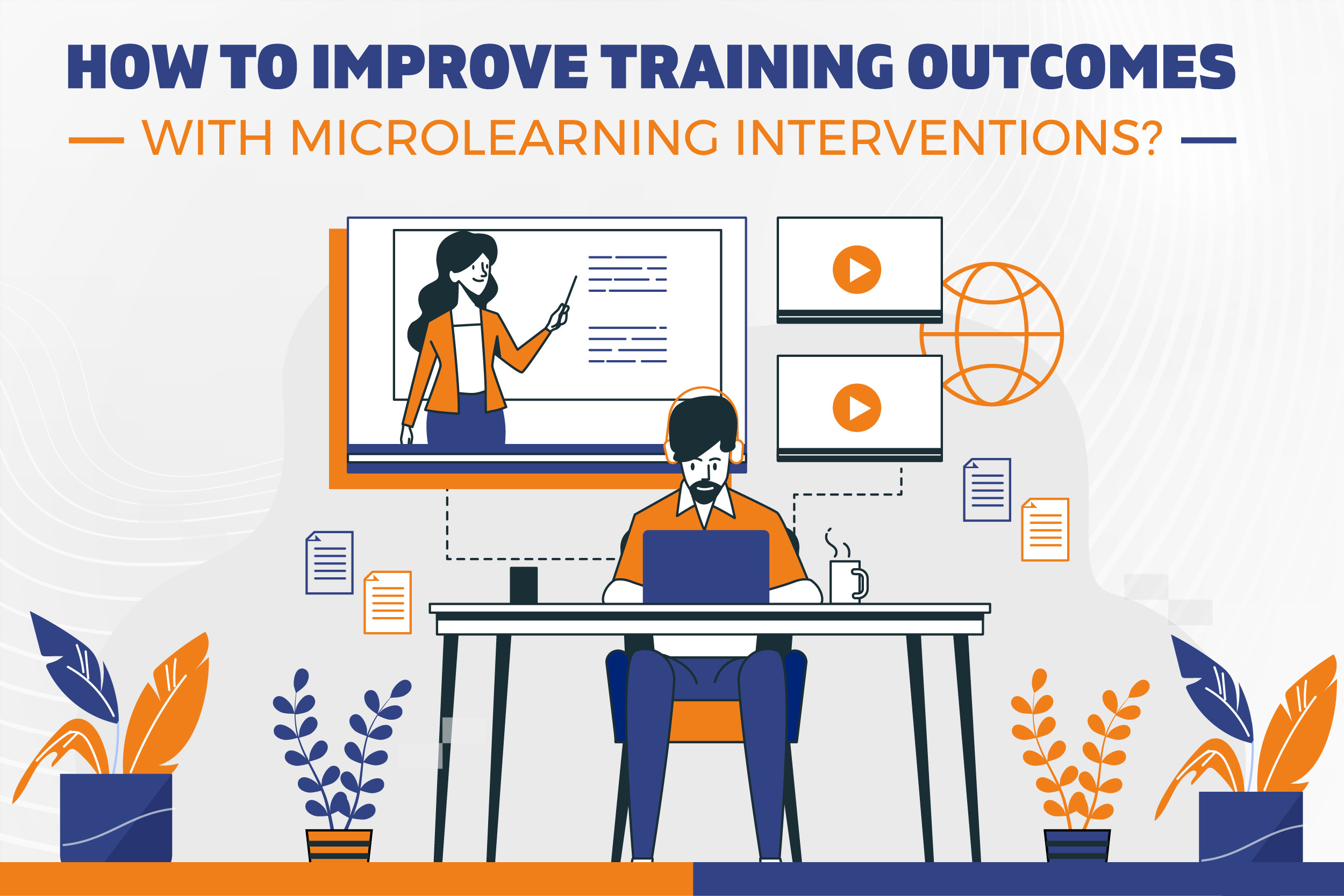
How To Improve Training Outcomes With Microlearning Interventions?
How often did you experience memory blackouts in the examination hall, or failed to retain something vital? If you are the victim too then you must know that one of the most predominant reasons for this is information overload. The same thing applies to training too. Too much information in training doesn’t make the training effective.
Result-oriented training that supports learners when they need it is a high-priority requirement at present. What's a more effective way to do this than microlearning? As a result, let’s delve further into ways that concentrate on using microlearning interventions to enhance training results.
The Forgetting Curve
It has been proven that people frequently lose the memory of the information they acquire over time. Mostly it is seen that only 10% of what the learners acquired in the session is retained by them after 7 days. The "forgetting curve" refers to this. The curve illustrates how rapidly we lose knowledge over time if we make no effort to remember it.
The Influence Of Microlearning On The Process Of Continuous Learning
Microlearning is a fantastic tool for enhancing learning, improving retention power, and—most importantly—enabling the application of newly acquired concepts in the workplace. Moreover, microlearning has developed into an excellent technique for combating the forgetting curve.
Microlearning generally concentrates on a single goal, eliminates all extraneous information, and facilitates the primary training or learning process. It is a task- or action-specific strategy that provides bite-sized learning to encourage learning and practice. Therefore, it aids in improved comprehension and consequently improved memory of the topics learned. As a way to reinforce important lessons, microlearning can be given right before an eLearning session or a few days following the official training or Leadership Development Training. The learners will recall the topics better for sure.
The learners are discreetly urged to implement the knowledge in their employment because of the reinforcement. The renowned Pavlov research lends credence to this. The learners pay closer attention to the topic at hand as microlearning becomes a part of their ongoing learning process.
The fact that microlearning may be developed and delivered in a number of forms is another significant benefit. These forms range widely and include games, videos, tests, exercises, podcasts, and much more.
Vital Factors To Guarantee That Your Microlearning Programs Are Effective
1. Understanding Your Audience
Understanding who could benefit from this kind of training and figuring out the best ways to engage them is the first step. Speak with them directly or through your standard Training Needs Analysis procedure.
Once you collate the necessary knowledge, you can adjust your material, such as a Leadership Management Course, and pick the best strategy to make sure it hits the point and maximizes the return on your training investment.
2. Concentrate On A Single, Logical Result
Take your time establishing a precise purpose before you start creating your microlearning. What is the main result you hope to reach? No matter how succinct and direct your course is, if the trainee cannot clearly understand the goal, they will never get inspired.
3. Microlearning Must Be Compelling And Practical
Your microlearning program needs to be interesting and useful, just like any other L&D initiative. You cannot get away with bad delivery just because it is shorter. Make sure all of the material or Leadership Management Course is relevant at all times and stay on topic.
Your microlearning should place a big emphasis on learning by doing if you want great retention and understanding. To help the knowledge stick, provide a good amount of short, simple activities that are beneficial in real-world situations.
4. Pick The Appropriate Formats
Choosing the proper format is essential when it comes to microlearning. But how can you pick when there are so many delivery options? It's crucial to first understand your audience. You can frequently point them in the proper direction by getting a sense of how they would like to learn and having an idea of when and where they will finish the learning.
Access to extra reading and reference materials will help learners remember the information and deepen their knowledge of it. This might take the shape of internal live chat groups or coaching sessions with internal subject matter experts.
5. Add Prizes And Achievements
A simple bonus or a prize may have a great impact on inspiring your employees to work their hardest. To help learners track their development and feel the joy of accomplishment, provide milestones regularly. In addition, you can offer incentives, like a badge or certificate, for passing stages and subjects.
You can also include a leaderboard so your staff can compare their performance to that of their colleagues. This gives you some extra incentive and support to finish the training on time as opposed to putting it on the back burner of your to-do list.
Endnote
Thus, microlearning may be included in an organization's cycle of employee learning or as a component of the ongoing learning path. It is an effective strategy to defeat the forgetting curve. When done right, microlearning may be a tremendously quick and efficient approach to meet your L&D objectives. Even the busiest professionals can accomplish it since it is broken down into digestible chunks of information that help in better retention of knowledge and can be customized to the learner's requirements.
